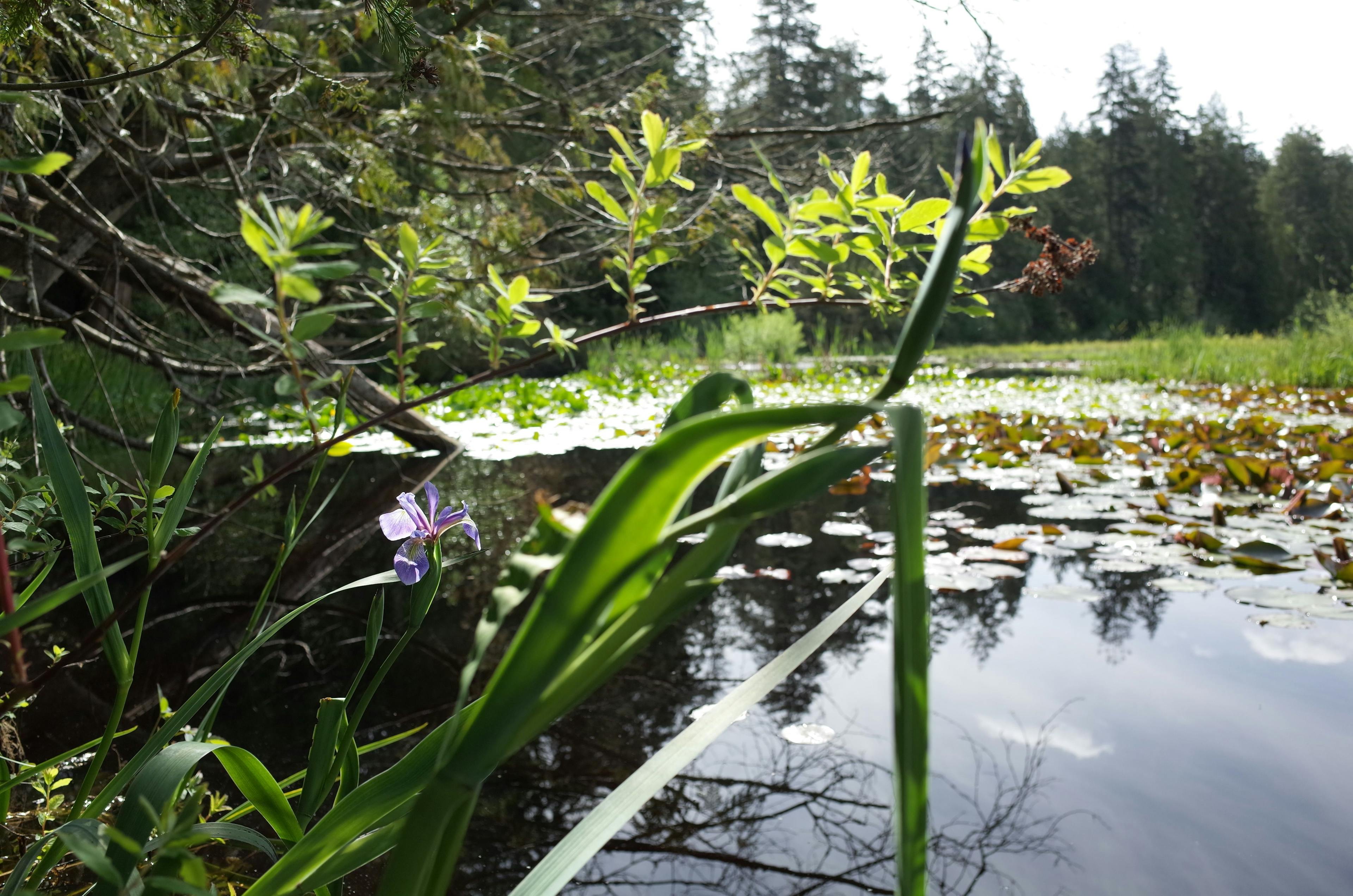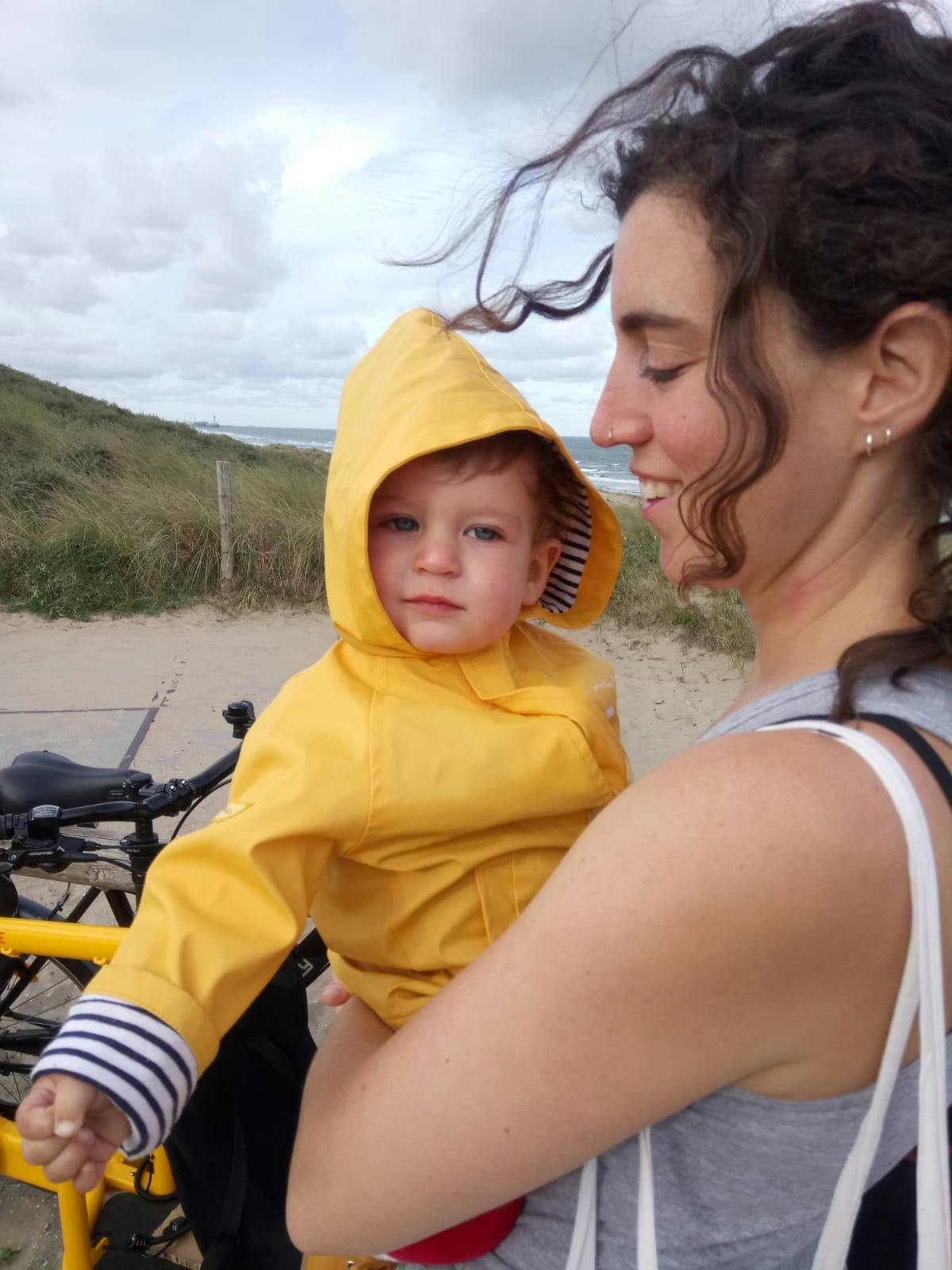With the voices of Alice Bertin, multi-faceted artist and biologist, Áine Mangaoang, musician and musicologist, Sarina Veldman, ethnobotanist, and Emily Robbins, fiction writer.
Facing Cultural Plant-less-ness
As an ethnobotanist, mother, and general plant lover, I often encounter the aftermath of the cognitive biases that result in our ignorance of plants. From the cardboard baby books available in libraries or bookstores that invariably portray only humans or animals, to botanically-vague ethnographic and archaeological reports, natural history communication in museums that shamelessly excludes plants, plant-less lists of proposed case studies in environmental humanities workshops, and a long etcetera. The subject of this article, based on extracts from 'plant diaries' which I and the other participants kept, is an attempt at counter-biasing.
Implications of the Lack of Plant Awareness
Plants provide habitat and sustenance for nearly all animals, including humans. They contribute over 80% of Earth's biomass, yet they are typically forgotten. Their "diversity is obscured within generic terms such as 'habitat', 'landscape', or 'agriculture'" (Lewis-Jones, 2016:1), constituting a mere backdrop on which animal, and especially human, activity takes place. A plant void is present in human communities that have lost touch with nature, often in the industrialised and urban world. This systemic bias towards neglecting plants results in the "(a) inability to see or notice plants in one's environment; (b) the inability to recognise the importance of plants in the biosphere and in human affairs; (c) the inability to appreciate the aesthetic and unique biological features of [vegetal] life forms [...]; and (d) the misguided anthropocentric ranking of plants as inferior to animals and thus, as unworthy of consideration" (Wandersee and Schussler 1999: 82). For example, plants do not tend to feature prominently in the academic literature, animals being preferred subjects of study over plants (Wandersee and Schussler 1998) and preferred targets for biodiversity conservation (Balding and Williams 2016).
Toward a Plant Turn?
The future may not be so gloomy for plants if, as some suggest, we are in the midst of a 'plant-turn'. Plants have recently been put in the spotlight of the traditionally human-focused disciplines of philosophy and anthropology, and have become the object of popular science writing (Myers 2014). 'Plant blindness' is now discussed in mass media (e.g., Ro 2019; Kritzinger 2018), as well as in scientific journals. The third issue of the new journal Plants People Planet focused specifically on 'plant blindness' and brought together the widest and most diverse set of contributions on the topic to date. Yet, two in five of all plants on Earth are estimated to be threatened (RGB Kew 2020), twice as many plants than animals have become extinct in the last 250 years (Briggs 2019) and, as Dawn Sanders points out, "the gathering of plant stories from different perspectives has become ever more critical" (2019: 133). Natasha Myers urges us to identify our plant allies and "conspire with plants" (2018:55) to grow together into sustainable futures. Rebuilding our everyday multispecies relations is only possible through critical re-storytelling.
The 'Plant Diary' Exercise
Last June, I was invited to give a talk in connection to Hannan Benammar's art piece Desert Garden (2015), an exhibition at the headquarters of the Artists' Union of Norway. The piece, a museum cabinet of desert plants, displays seeds, roots, stems, fruits and other plant parts collected from deserts worldwide, without labelling. They lie as they are, evoking their evolutionary and biogeographical stories through their silent material beauty. In my talk, I briefed a non-expert audience on the discipline of ethnobotany and the importance of plants to life. After the talk, we discussed our own plant unawareness alongside our own plant awe. The idea of writing a 'plant diary' arose. According to Wandersee and Schussler, two of the symptoms of plant blindness are "failing to see, notice or focus attention on plants in one's daily life" and "overlooking the importance of plants to one's daily affairs" (1999: 82). 'Plant diaries' are an invitation to do the opposite.
What we call a 'plant diary' is a one-day personal journal where encounters with plants are recorded -- from what you eat, wear, and use, to what you feel, talk, think, or read. It is personal, non-systematic and imperfect; an attempt to encourage plant awareness. Urban, professional lives are busy, so a single-day 'plant diary' may take a while to write. Each of us kept notes on paper during our plant date and wrote a more or less coherent text afterwards. However, awareness begins before the date. In the preceding week or so, we tried to look further, to observe our actions, and to take mental notes. In doing so, we may have overcome some of the cognitive challenges of seeing plants (Wandersee and Schussler 1999).
Here are tastes of what we discovered:
Sleep is cotton.
"I get out of bed: sheets made of 100% cotton" (Alice);
"When we wake: cotton of the bedsheets, the pillow, my son's pyjamas, my nightgown" (Emily);
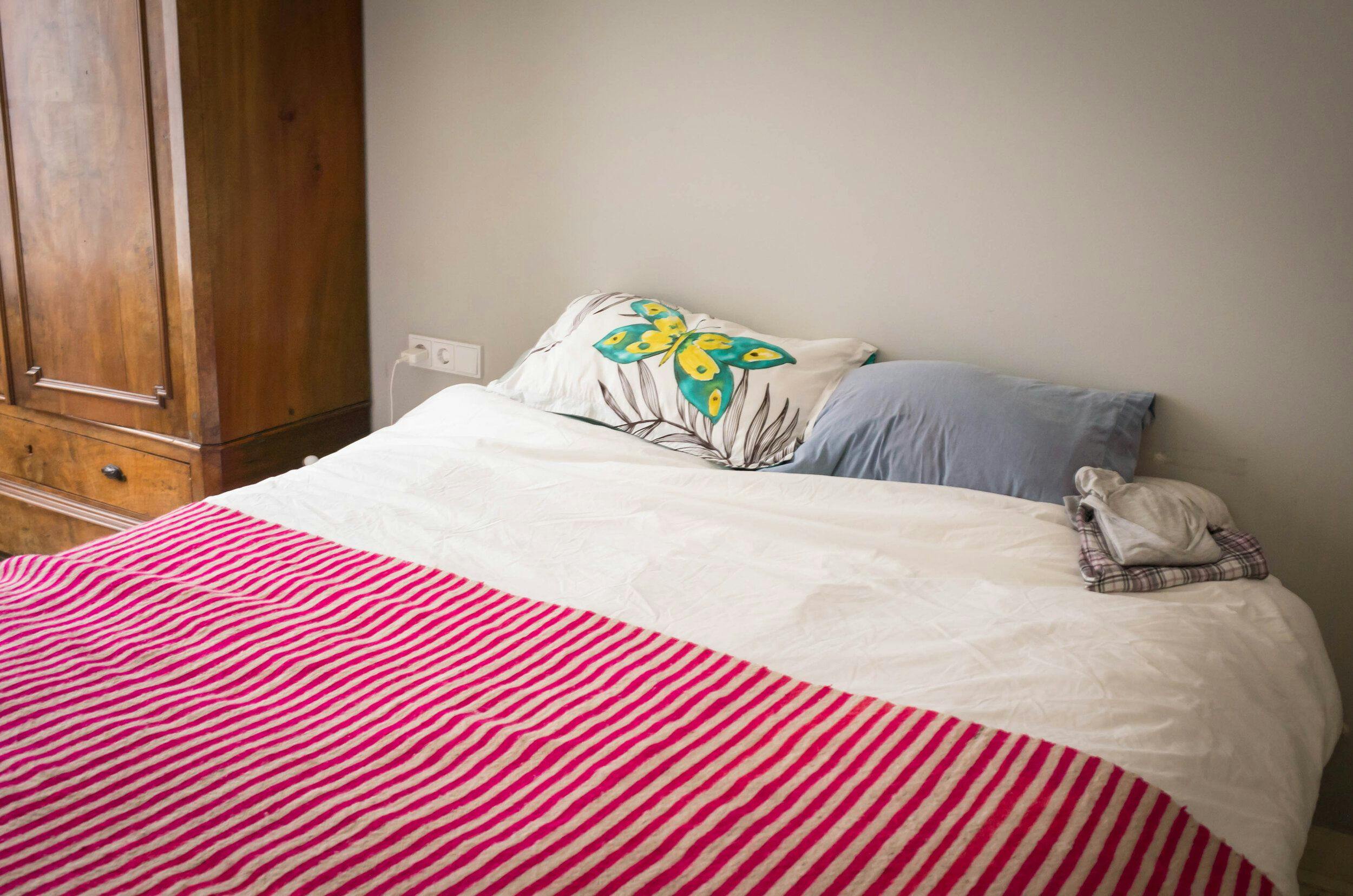
And cotton clothing accompanies us during the day.
"I get dressed. Invariably jeans and some cotton T-shirt. Cotton, cotton" (Irene).
Or it doesn't. "Put on a pullover, appreciate the warmth of it, looking at the label and a bit disappointed that it is mostly synthetic" (Alice).
Breakfast, the energy day kick-off, is vegetable in one way or other.
"Breakfast yields a plentiful crop for myself, my partner, and baby with porridge oats, bran flakes, fresh cherries (unknown origin), grapes, apple juice, and coffee" (Áine).
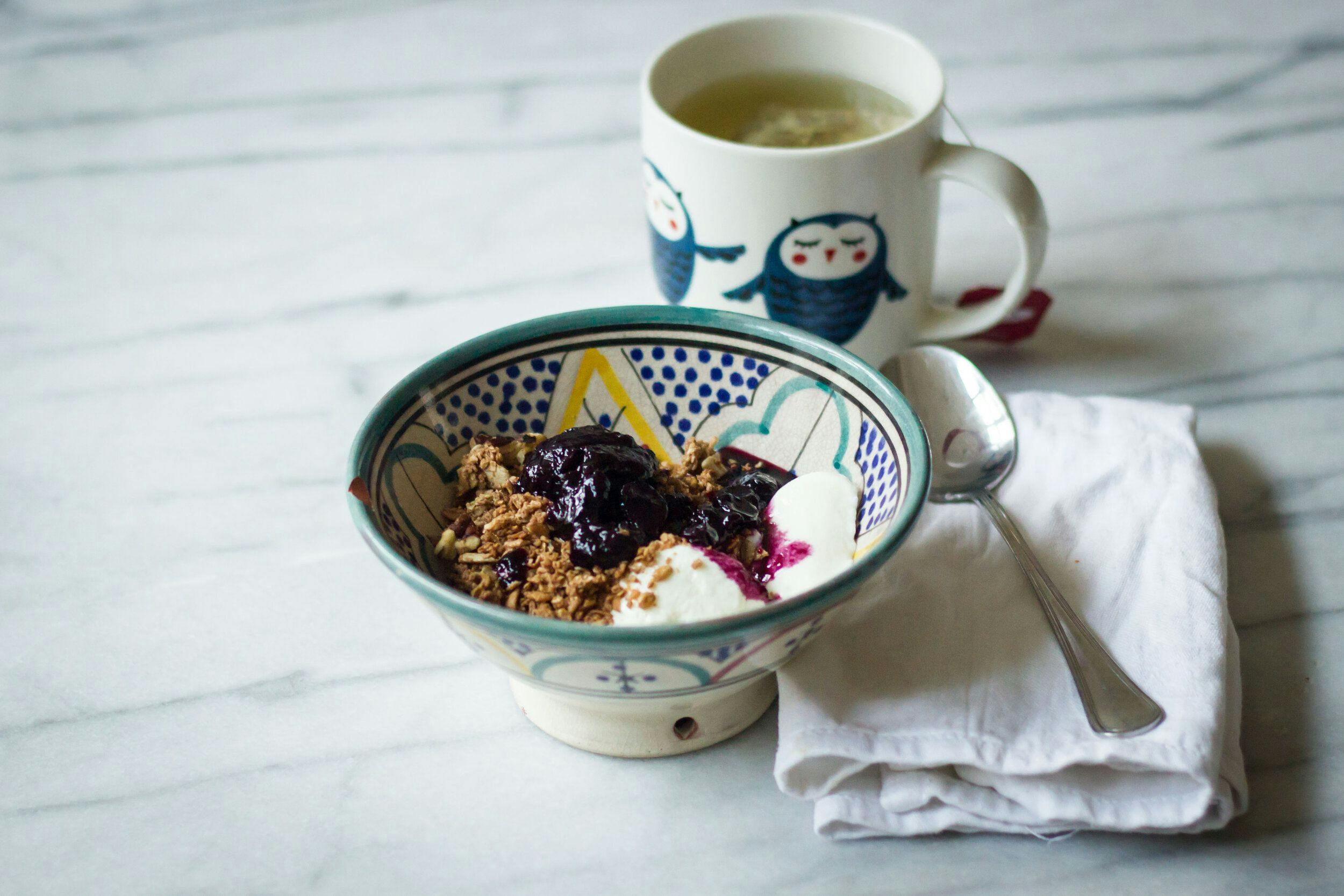
"First and foremost, coffee" (Irene).
Plant materials, raw or transformed, are ubiquitous -- when we pay attention.
"I hop in the shower and use shea butter soap, shampoo with bamboo extracts, and a body scrub made from mango seed oil" (Áine).
"My shoes have a cork sole" (Irene).
"If we look to our left, through the window, we can see books -- which were also once trees" (Emily).
"Plants I have thrown away today so far: Toilet paper, paper towels, green tops of strawberries, mouldy part of a blueberry, banana peel and paper sticker on banana peel. Cucumber skins. Pancake (wheat, olive oil) my son threw on the floor. Smashed strawberry. Watermelon rind, coffee grounds" (Emily).
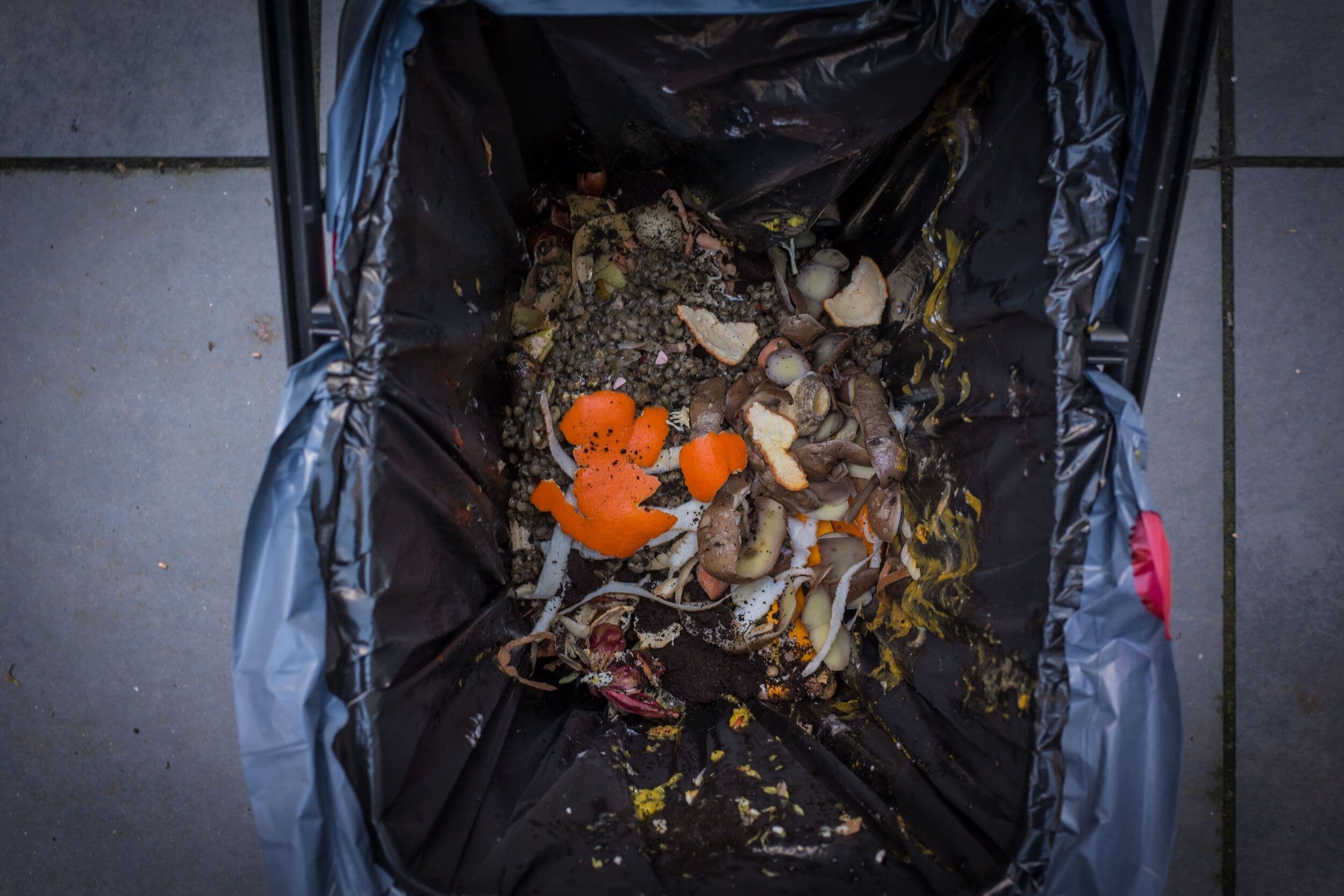
Plants in our lives are not just generic 'plants', though. Single living individuals or vegetable objects are containers of love, joy, and value. Traditionally, plant individuals have been singled out for their medicinal properties (e.g., Svanberg 2012) and in many cultures certain plants are thought to have a soul or are sacred (e.g., Dafni 2006). At our very local scale, certain particular houseplants or plant-made objects are like no other to us -- unique and irreplaceable.
"On my desk sits a little souvenir from one of my friends, a delicate hand-made Japanese basket of bamboo fibre. It always makes me so happy when I look at it" (Sarina).
"On our balcony we have a little basket with tiny succulents. The other day I was so excited, because one of them finally started to flower. It grew a long flower stalk and had several flower buds" (Sarina).
"My house is full with plants; an enormous fern that I got from Leiden Hortus Botanicus almost four years ago, I am very attached to it; a beautiful purple flowering plant of which I don't know the name, that my mother gave me; hanging ivy plant; Ficus sp.; pachira, or Money Tree, originating from French Guiana where I went to do field work about rice; and finally a Neoalsomytra in a hanging pot which I recently bought. I realise now that I write about it how much these plants are more for me that simply decoration, they are bearers of memories" (Alice; see images below).
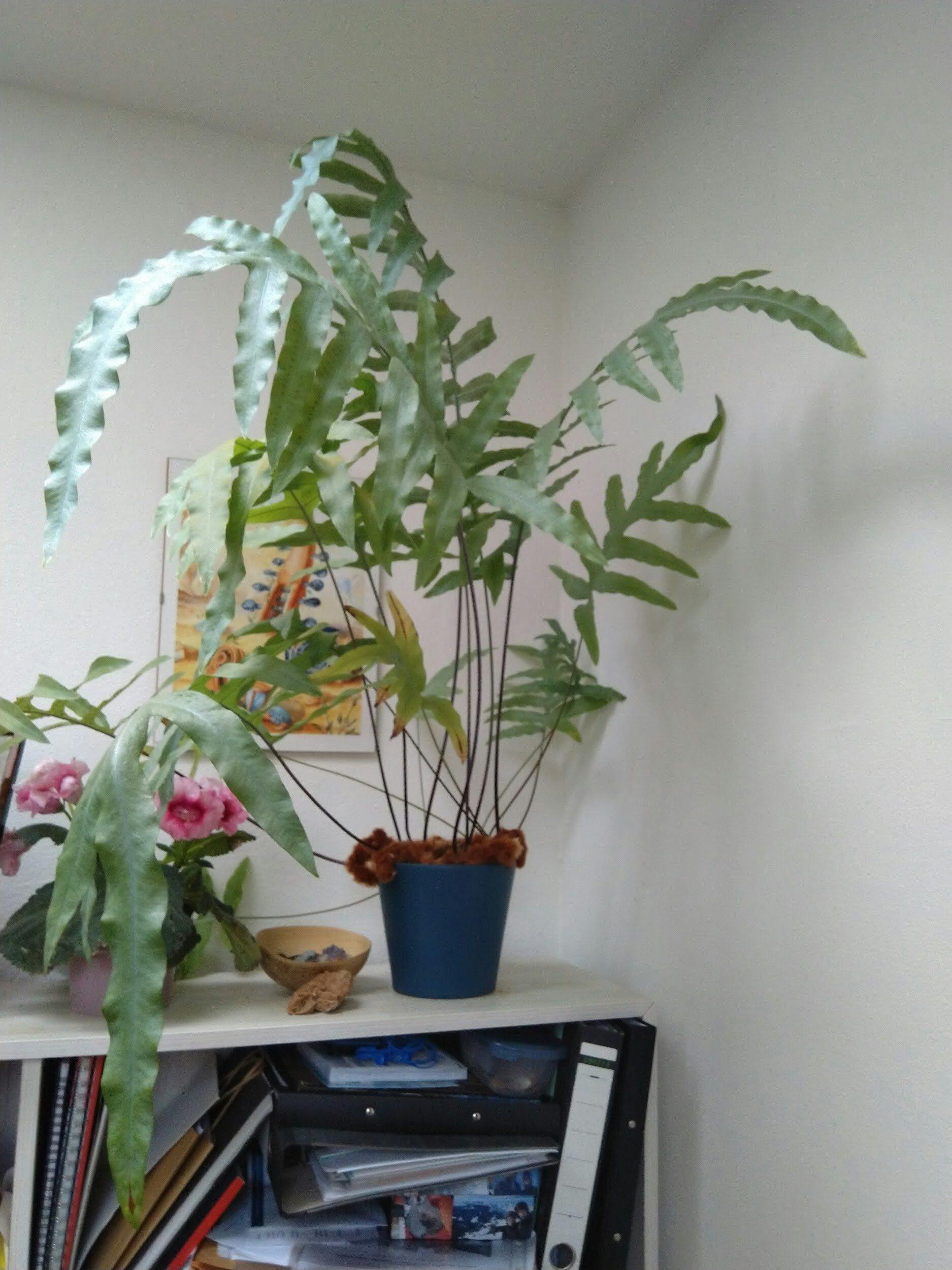
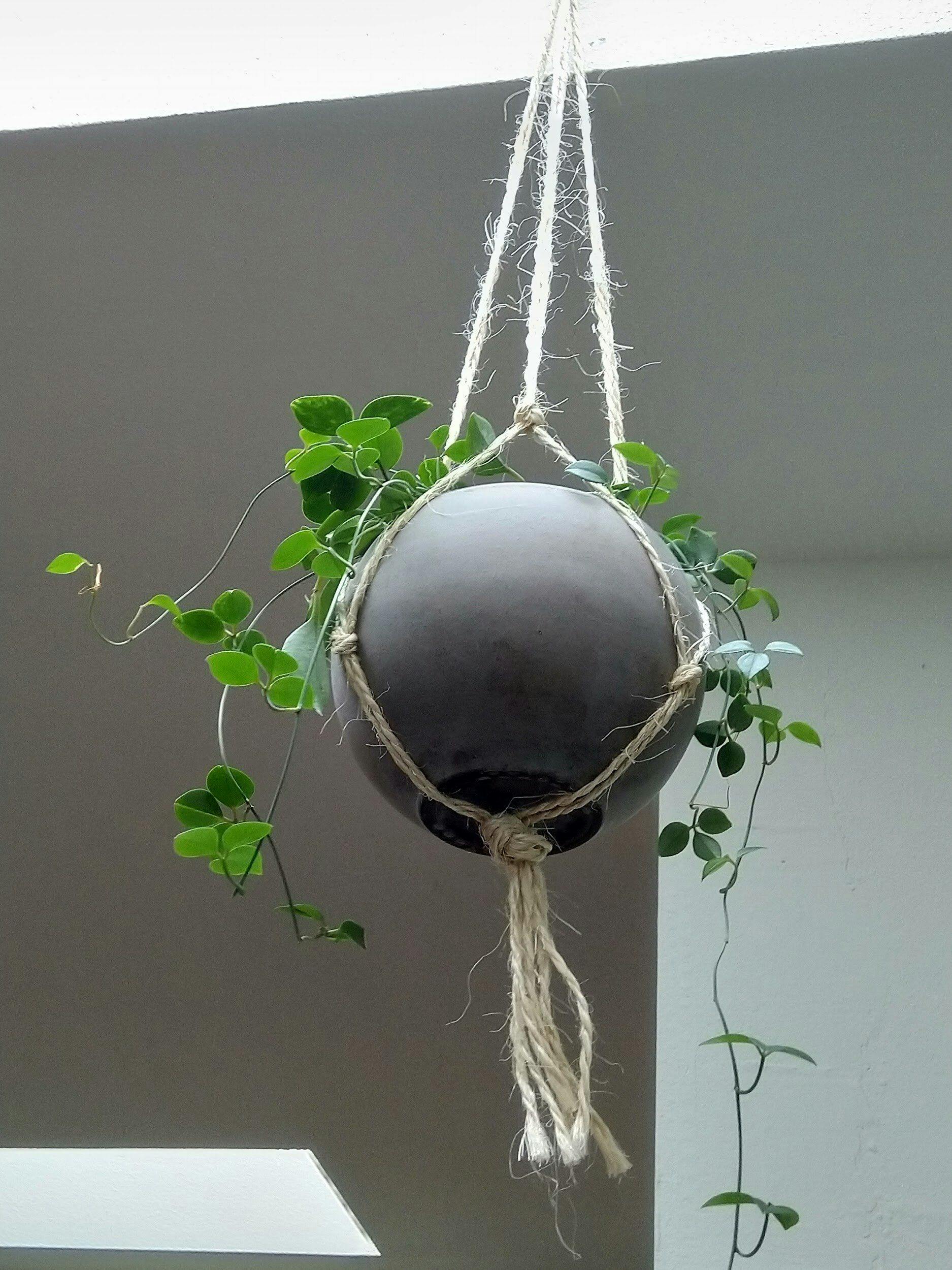
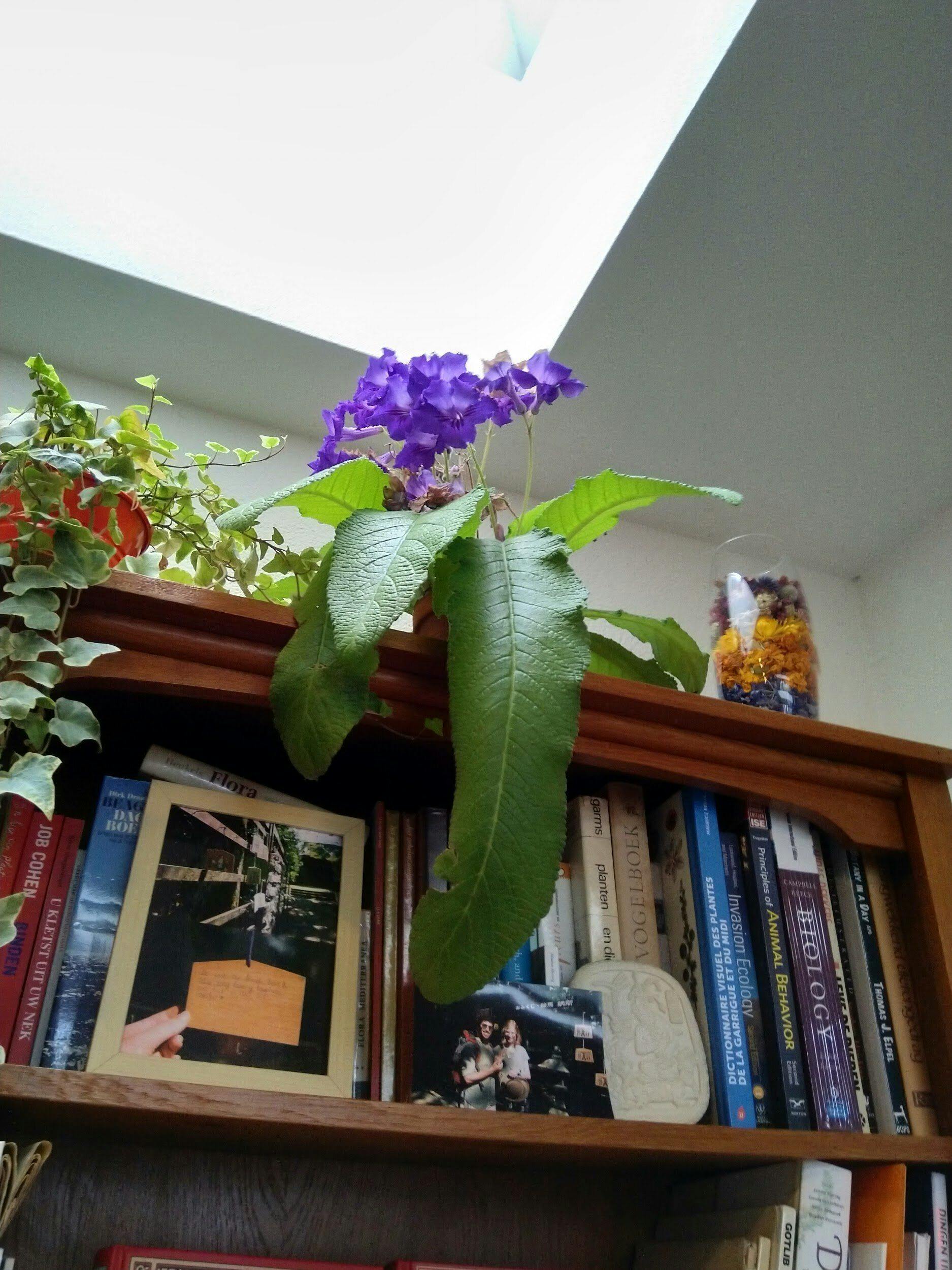
!<Photos of some houseplants by Alice Bertin>
And so, plants are also highways to memories of home and kin.
"5 pm - My son and I are watching an ant crawl across a bed of petunias. [...]Petunias are a flower I have a special relationship with. My grandfather planted them for me when I was three years old, weeks before he died. This story was told to me my whole life, and while we were smelling the petunias today, I told this story to my son, though he is so young I don't think (hope) he understands death. This is the only memory I have of my grandfather, a story passed down to me, to take the place of his life, and it is one of plants" (Emily).
"For dinner I make ratatouille from my region [Provence, France], with aromatic herbs. Thyme, salvia, basil, rosemary. I get annoyed at the amount of plastic around the vegetables that we buy in the stores, and at how tasteless they are compared to my childhood memories. Especially tomatoes" (Alice).
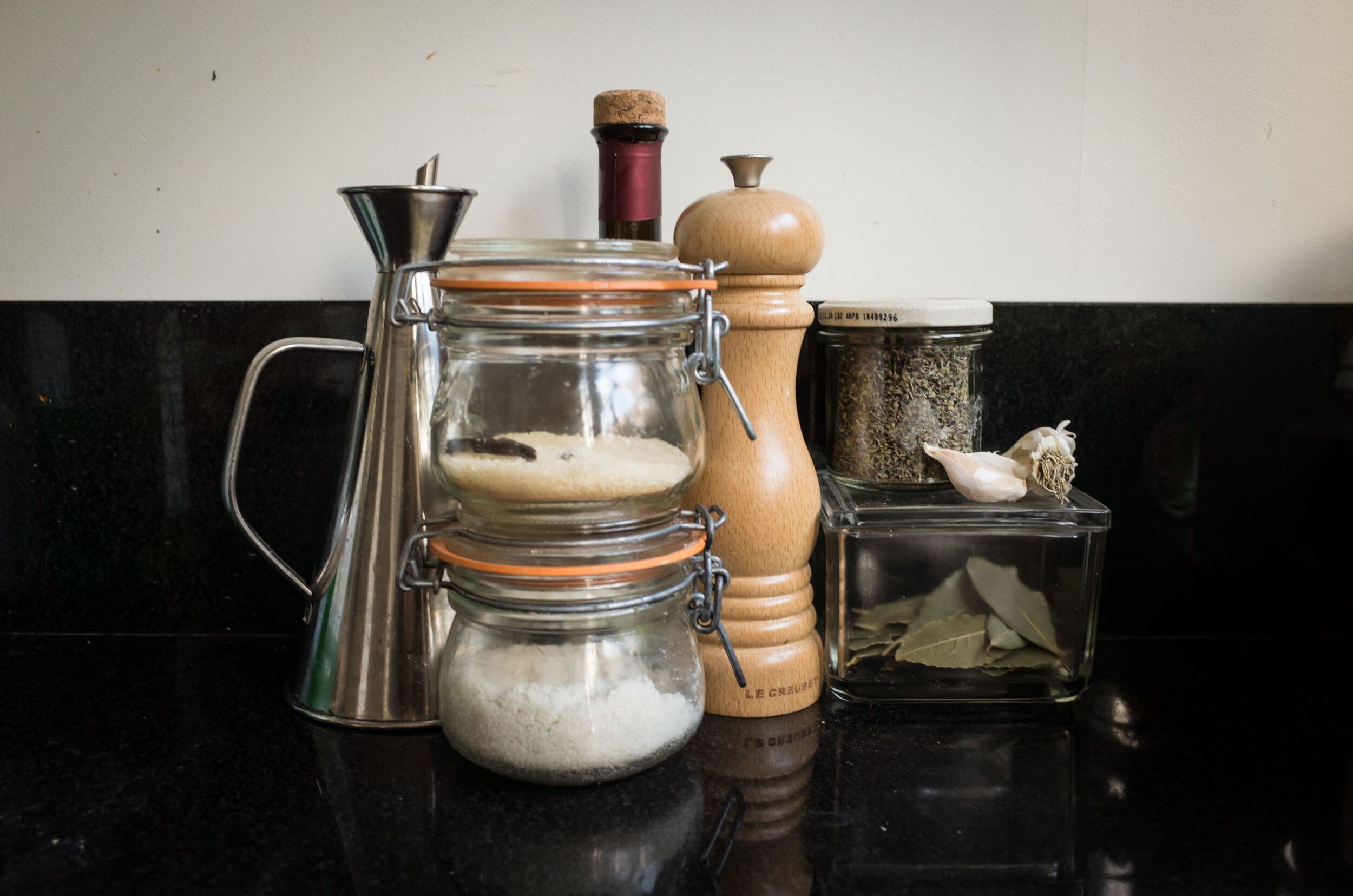
Plants shape our environments, indoors and outdoors. Our bodies, activities and creativities are in tune with them even when we are not consciously aware of it (Myers 2018). In their essay on metaphor, Altfeld and Diggs (2019) discuss how the screen-based life that urbanites are living leads to engaging less and less in experiences involving non-visual senses. Plant awareness is also a reclaim of the senses.
"In various jars and vases there are some cut plants, including around 8 eucalyptus leaves (store bought) and some fresh lavender from the garden. Both plants smell incredible" (Áine).
"Rice is used in so many different forms, such as a fermented rice paste which gives a sweet flavour to the food" (Alice).
"As we lie on the lawn, I appreciate the temperature and texture of the grass" (Irene).
So often the relationships we establish with plants are not visual: we come to know them though taste, touch and smell, as much as sight. And perhaps this is why we have to "look again" to realise they are part of our lives. When navigating the world "as we see it" (Altfeld and Diggs, 2019) plants remain unnoticed, at a distance. Plant diversity surrounds us and yet we don't know what most of these species are.
"There are lots of hedges that are made of plants I don't know the name of" (Áine).
"While attempting to go through my interactions with plants today, I realise how little I am aware of what material my furniture, clothes and other wares are made of" (Sarina).
"I walk by many plants I know and many others that I don't know or haven't paid close attention to, including many grass species and a couple of ferns" (Irene; see image below).
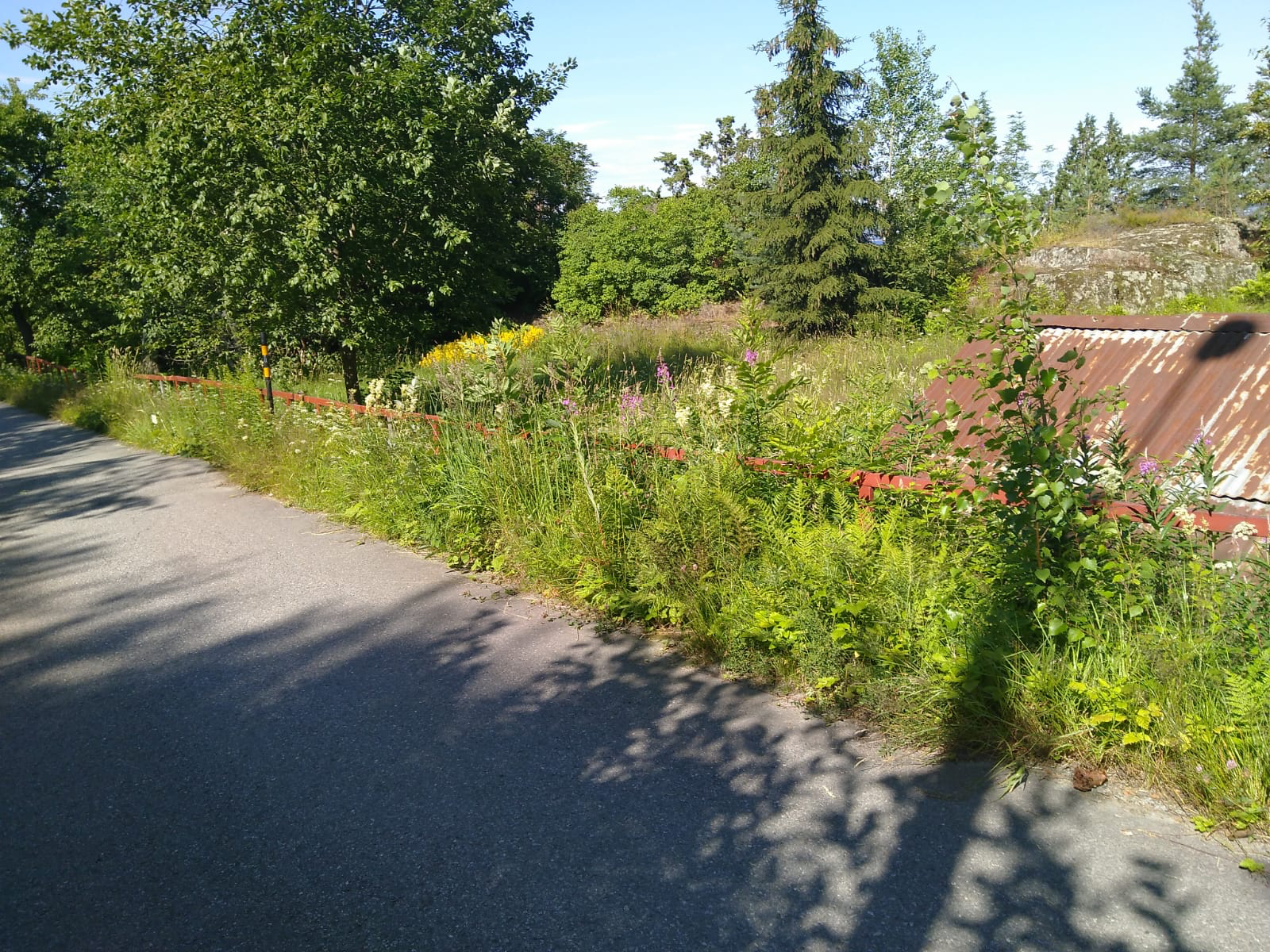
And wood is a major question mark.
"After my breakfast I start to work behind my wooden desk (what kind of wood? no idea)" (Sarina).
"The baby plays with some wooden toys (though I have no idea of what kind of tree these are made from)" (Áine).
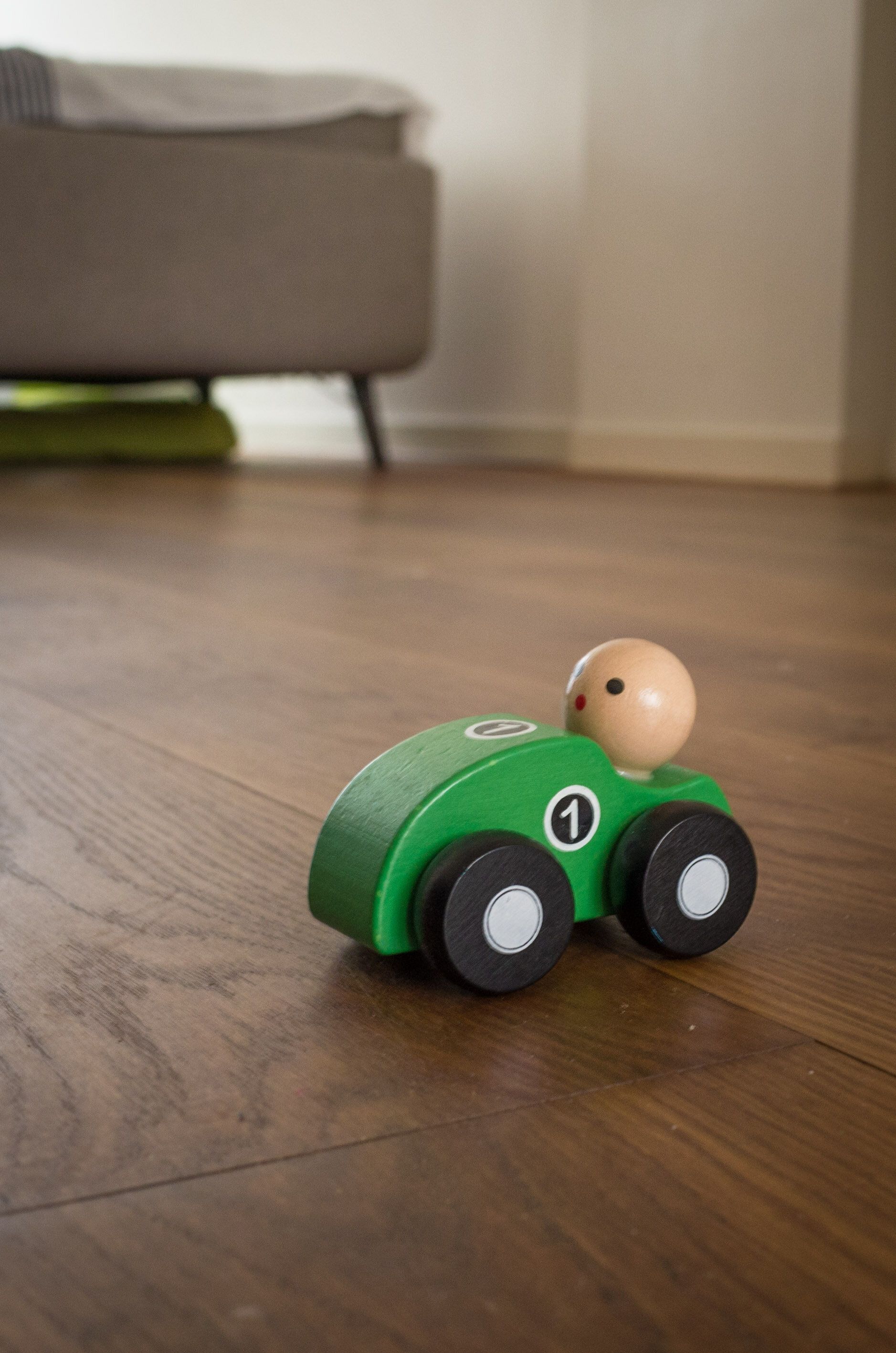
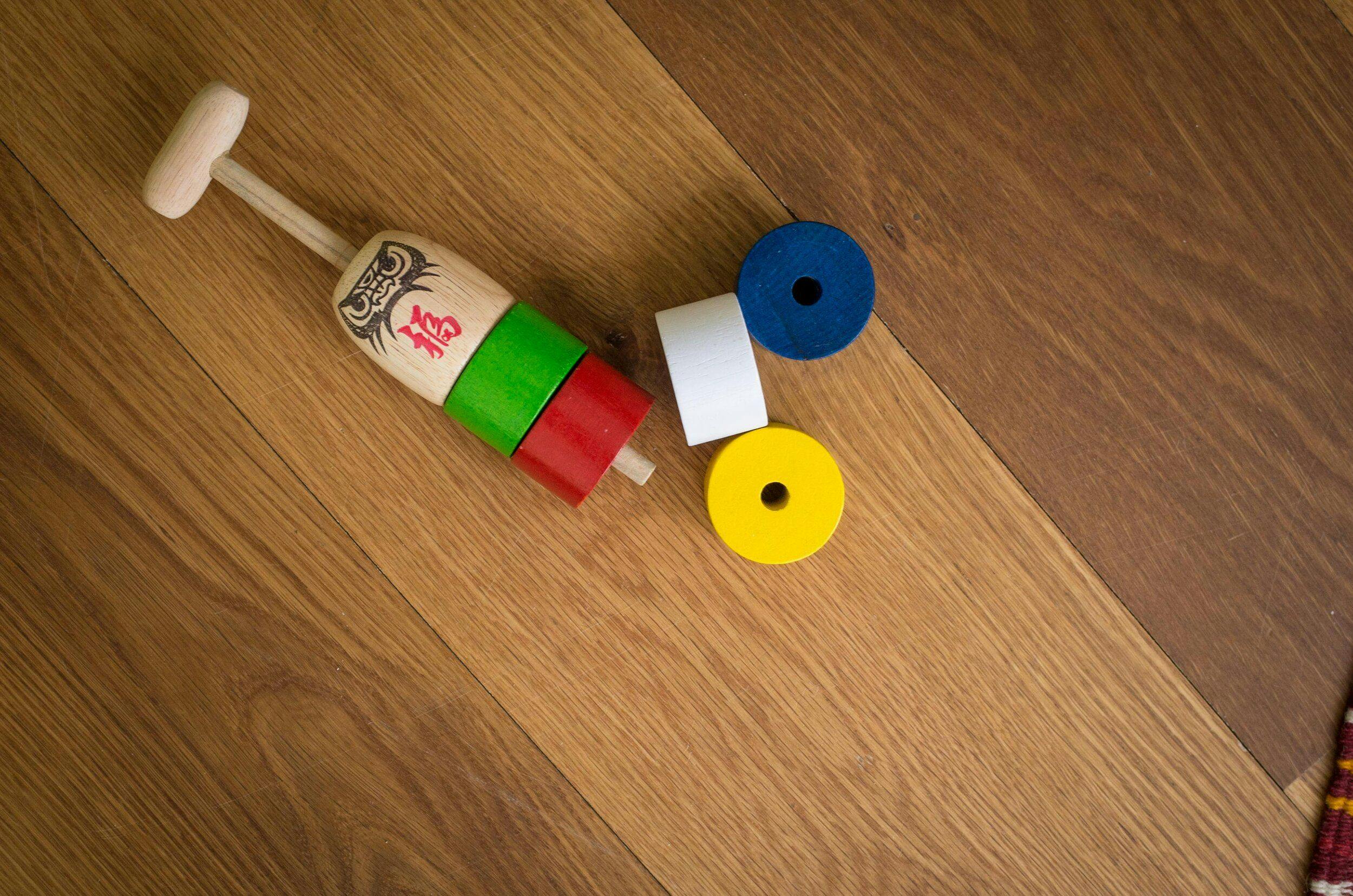
!<Wood toys>
"Down by the sea, my son continues to explore the qualities of wood (???) by digging with a random driftwood stick, making it float, scratching it to a rock" (Irene).
But plant-less-ness can become plant-iful with some focused attention.
"We have long understood that calling a man by his name is a way of seeing him; of recognizing his own selfhood and uniqueness in the world. This diary has meant extending the same courtesy to plants. I think this has been the most powerful; to see individual plants where before I hadn't thought to, I had lumped so many together. It is a way of looking that I hope to carry forward" (Emily).
"And then I remember -- we breathe plants' breath. Plants produce the oxygen that we breathe. We evolved in a plant world, a world of oxygen. Our cells are geared for it, tuned into the plant atmosphere. I take this in. It's big, it's complete, it's total, it leaves no room to doubt: I breathe in as plants breathe out, I breathe out what they breathe in" (Irene).
Some Final Thoughts
Unawareness of plants, plant-less-ness, leads to under- and misinformation about plants and their importance, and from this to lack of or inappropriate care (Balding and Williams 2016). In western societies, people may not treat plants with respect in urban spaces (Kopnina 2013). One Dutch plant shop goes as far as to advertise to its customers: "Attention: plants and orchids are living organisms, which require proper care" (orchideen-shop.nl). Most urbanites are not growing, harvesting, hunting, gathering, or participating in the production of our own food anymore, but take it for granted in supermarkets. We do not necessarily think about what food is or is made of, where it comes from and by whose work. And food is but one aspect of our plant-entangled lives. As urban residents (and we are globally increasingly so), we have often lost the "intensely respectful emotional engagement with nature" and its biological diversity as displayed in many indigenous communities (Hunn 2014: 148). But 'turning' to plants happens. Garden projects engage and build more-than-human communities in cities across the world (e.g., Nicol, 2019). Taking the time to observe our daily intimate relationships with plants may be a first step to re-establishing and nourishing these engagements (see also Myers 2018).
'Plant diaries' draw you to discover the plants of your life. They are not just an 'aha' experience regarding the wealth, closeness, and importance of plant diversity; they are also a journey to reclaim all of our senses in perceiving and engaging with the world. They are not a means of "curing plant blindness", but a way of "growing plant love" (McDonough MacKenzie et al. 2019).
Further Final Thoughts
I have a special love and care for plants. However, I cannot conclude this article without mentioning the other forgotten life forms: fungi, insects, bacteria. As Knapp puts it, "disregard for any organism that is not vertebrate (like us) is the more pervasive problem" (2019: 164).
Do feel invited to try out your own 'plant diary'! Should you want to share it with me and contribute to a future compilation of world plant diaries, please get in touch.
References
Altfeld, H. and R. Diggs. 2019. Sweetness and strangeness. Aeon, [online]. Balding, M. and K. J. H. Williams. 2016. Plant blindness and the implications for plant conservation. Conservation Biology, 30(6), pp.1192-1199. Briggs, H. 2019. Plant extinction 'bad news for all species'. BBC News, [online] [Accessed 10 September 2019]. Dafni, A. 2006. On the typology and the worship status of sacred trees with a special reference to the Middle East. Journal of Ethnobiology and Ethnomedicine, 2:26. Hunn, E. 2014. To know them is to love them. Ethnobiology Letters, 5, pp.146-150. Knapp, S. 2019. Are humans really blind to plants? Plants, People, Planet, 1(3), pp164-168. Kopnina, H. 2013. Requiem for the weeds: Reflections in Amsterdam city park. Sustainable Cities and Society, 9, pp.10-14. Kritzinger, A. 2018. 'Plant blindness' is a real thing: why it's a real problem too. The Conversation, [online] [Accessed 10 September 2019]. Lewis-Jones, K. E. 2016. Introduction: People and plants. Environment and Society, 7(1), pp.1-7. MacKenzie, C. M., Kuebbing, S., Barak, R.S., Bletz, M., Dudney, J., McGill, B. M., Nocco, M. A., Young, T. and Tonietto, R. K. 2019. We do not want to "cure plant blindness" we want to grow plant love. Plants, People, Planet, 1(3), pp.139-141. Myers, N. 2014. Conversations on plant sensing: Notes from the field. Nature Culture, 3, pp.35-66. Myers, N. 2018. How to grow livable worlds: Ten not-so-easy steps. In: K. Oliver-Smith, ed. The world to come. Gainesville, Florida: Samuel P. Harn Museum of Art. Nicol, P. 2019. Growing together in the city. The Ethnobotanical Assembly, 4 [online]. RBG Kew. 2020. The state of the world's plants and fungi 2020. London: Royal Botanic Gardens, Kew. Ro, C. 2019. Why 'plant blindness' matters — and what you can do about it. BBC Future, [online] [Accessed 10 September 2019]. Sanders, D. L. 2019. Standing in the shadows of plants. People, Plants, Planet, 1(3), pp.130-138. Svanberg, I. 2012. Folk knowledge of an individual plant specimen: The case of the royal fern (Osmunda regalis L.) in Virestad Parish, Småland, Sweden. Ethnobiology Letters, 3, pp.63-67. Wandersee, J. H. and Schussler, E. E. 1998. Plants or animals: which do elementary and middle students prefer to study? A working paper. Baton Rouge, LA: 15degree Laboratory, Louisiana State University. Wandersee, J. H. and Schussler, E. E. 1999. Preventing plant blindness. The American Biology Teacher, 61(2), pp.82-86.
